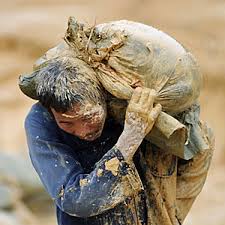The fact that the largest nation in the world is able to manage a capitalist economy without granting political freedoms, even in the presence of the new information medium which is the Internet, represents an unprecedented challenge for those who believe that democracy and the market sooner or later must converge. The unique dimension of China, the peculiarity of its history and its civilization lead to fear that the union between authoritarianism and the market may be solid and lasting. The efficiency of the censorship applied by the Beijing government to the Internet has become a symbol for many Westerners, who observe the successes of the repressive apparatus against dissent.
In every production sector, the country has used production techniques that consume more energy than its Japanese, European or American competitors. Changing this model of development will require difficult sacrifices, even in terms of social consensus. For the Beijing government, the consent of the urban middle class is a fundamental element of political and social stability.
In China, arable land for cereals is only 600 m² per inhabitant, compared to 1900 m² per inhabitant in the United States, yet the American workforce employed in agriculture is only 2% of the active population. The Chinese labor still employed in agricultural work is largely overabundant, unproductive, underutilized, and this is a structural cause of its misery.
The fact that China has become a major world exporter of fruit and vegetables does not prevent it from being doomed to not be self-sufficient in basic production – such as rice, cereals, soybeans. The mass expulsion from the countryside appears to be an inevitable process destined to last a very long time.
The rural population of the country is estimated at around 900 million people. 40% of all farmers on the planet live in China. The other side of the Chinese economic miracle was summarized in November 2006 by a World Bank study relating to the period 2001-2003: in that three-year period of growth, 10% of the population saw their income decrease by 2.4%. Over the same period, the richest 10% of Chinese recorded an income increase of 16%. The condition of large masses of peasants at the beginning of the 21st century. it was still marked by profound injustices, arbitrariness and oppression by the political class.
The flight of Chinese peasants to urban factories and construction sites gives rise to other hotbeds of social tension. In cities, the fate that awaits rural immigrants is that of second-class citizens, victims of a sort of apartheid. Deprived of the status of urban residents, immigrants from the countryside are not entitled to health care or schools for their children. They are condemned to the humblest jobs, underpaid, blackmailed by their employers.
Romano Pisciotti..Browsing the web



